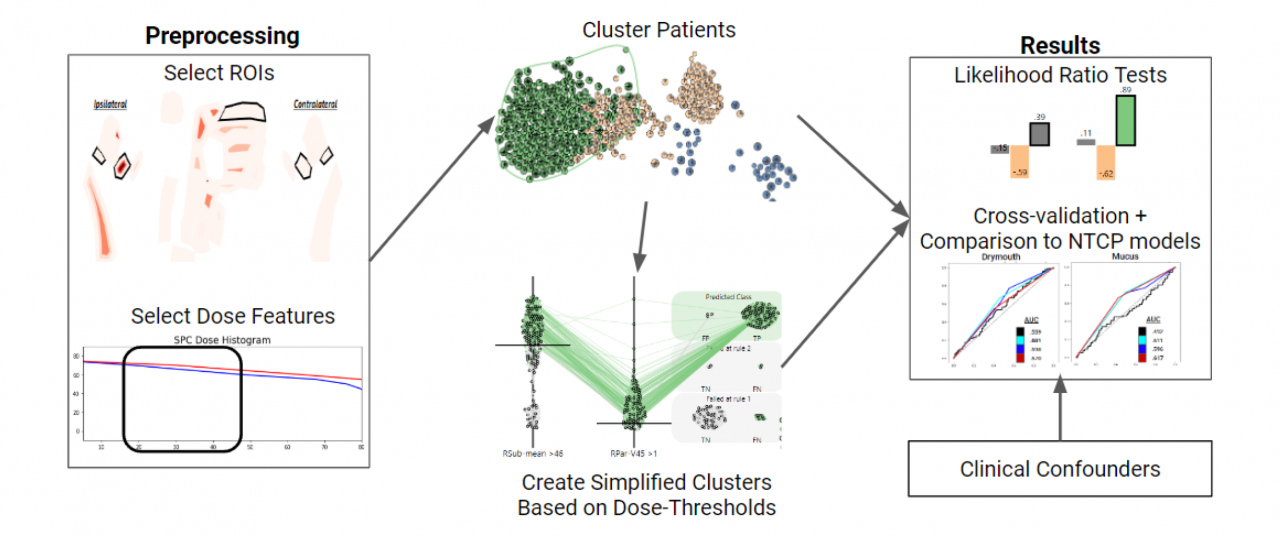|
|
||||||||||||||||||
Multi-Organ Spatial Stratification of 3-D Dose Distributions Improves Risk Prediction of Long-Term Self-Reported Severe Symptoms in Oropharyngeal Cancer Patients Receiving Radiotherapy: Development of a Pre-Treatment Decision Support Tool
Researchers: Andrew Wentzel, G. Elisabeta Marai, Abdallah Sherif Radwan Mohamed, Mohamed A Naser, Lisanne V Van Dijk, Katherine Hutcheson, Amy M Moreno, Clifton D Fuller, Guadalupe Canahuate
Funding: NIH NCI-R01-CA258827, NLM-R01-LM012527; NSF CDSE-1854815, CNS-1828265 Advanced radiotherapy treatments for Oropharyngeal cancer have improved patient survival rates, although they lead to understudied long-term symptoms. By analyzing three-dimensional dose distributions to vital organs via custom unsupervised machine learning, we identify correlations with long-term patient-reported symptoms. Our innovative approach surpasses existing clinical guidelines, offering actionable insights for optimizing treatment plans and minimizing post-treatment side effects. This work by visual computing researchers at EVL is in collaboration with clinicians at MD Anderson Cancer Center from Texas and data mining specialists at University of Iowa, and it is supported by funding from the US National Institutes of Health (NIH awards NCI-R01-CA258827 and NLM-R01-LM012527), and US National Science Foundation (NSF awards CDSE-1854815 and CNS-1828265). Date: July 17, 2023 |